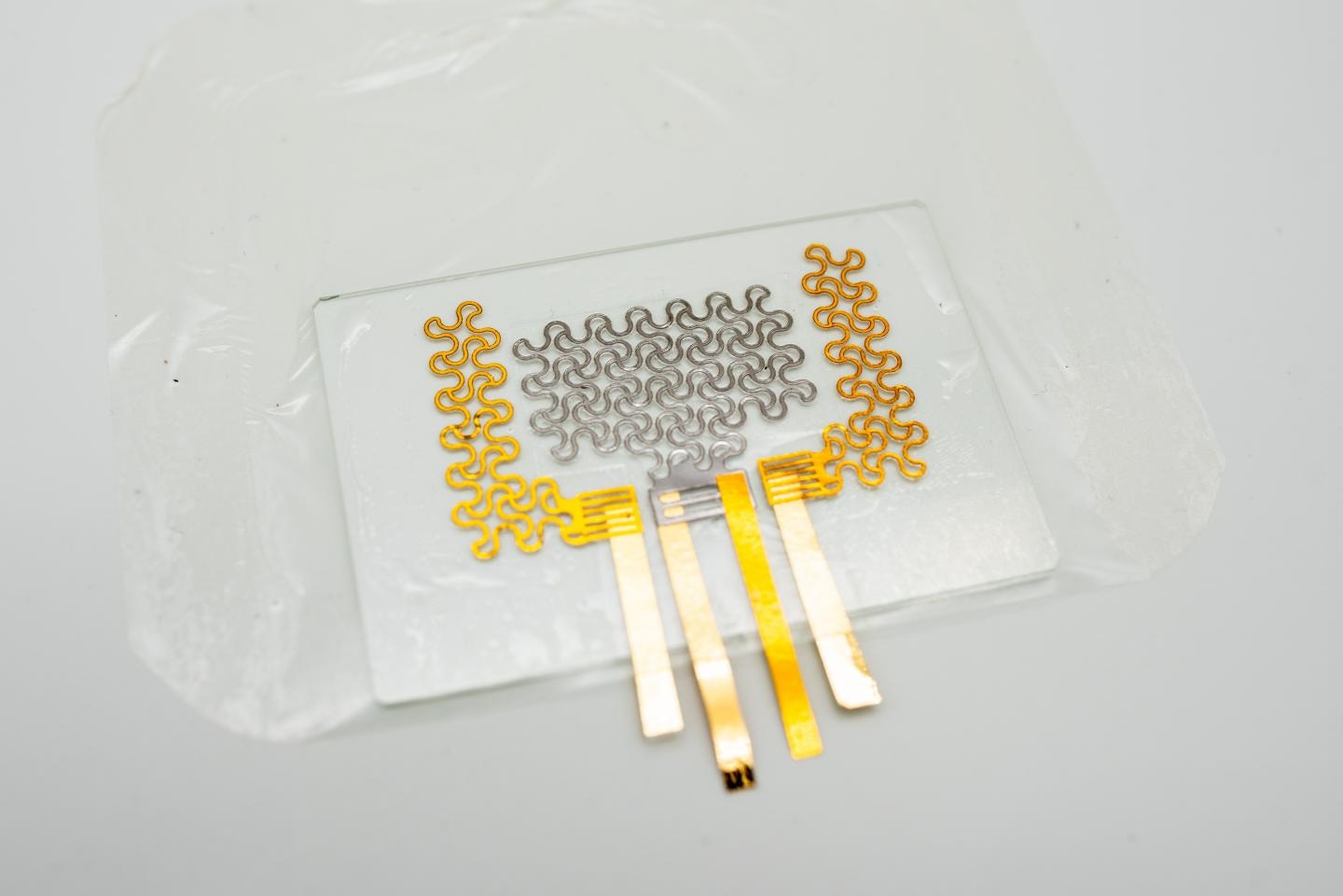Engineers at the University of Texas at Austin have developed a new “e-tattoo” that could enable easier and more accurate heart monitoring than the current technology allows.

Credit: Cockrell School of Engineering, The University of Texas at Austin
According to the National Center for Health, the leading cause of death in Texas is heart disease, which accounted for more than 45,000 deaths across the state in 2017.
Currently, doctors use electrocardiographs (ECG) to monitor the heart – a technology that has not changed in any significant way for almost a century.
Now, Nanshu Lu from the Cockrell School of Engineering and colleagues have developed an electronic tattoo technology – a wearable, graphene-based device that is placed on the skin surface where it measures various electrical and biochemical parameters.
As recently reported in the journal Advanced Science, the lightweight, stretchable device can be placed on skin across the heart for long periods, without causing any significant discomfort. It tracks heart health by simultaneously taking electrocardiograph (ECG) or seismocardiography (SCG) measurements.
With ECG, the rates of electrical activity in the heart are measured for each heartbeat, while SCG measures the associated chest vibrations. The e-tattoo, which is connected to and powered by a Smartphone is the first device to incorporate both ECG and SCG for monitoring of heart health.
Monitoring the heart using ECG alone is not accurate enough to determine heart health properly. However, it does provide useful additional data once combined with SCG measurements, which serve as form of quality control by indicating the accuracy of ECG.
"We can get much greater insight into heart health by the synchronous collection of data from both sources," says Lu.
Although e-tattoos that take ECG readings are not a new technology, other technologies such as the SCG sensor are usually non-stretchable devices that are awkward and uncomfortable to wear. Now, Lu and colleagues have used a piezoelectric polymer that generates electric charge when it senses mechanical stress to incorporate SCG measurements into the soft stretchy e-tattoo.
The device also includes 3D digital imaging technology that maps chest vibrations so that the optimal position for the device can be identified.
A further advantage over conventional technologies is that unlike ECG, the tattoo eliminates the need to attend a doctor’s appointment, where heart health would only be assessed for a couple of minutes at a time. With the e-tattoo, heart health con be monitored constantly over the course of days.
Lu and colleagues are now working to improve the data collection and storage the device provides, as well as how it is powered; a wireless form of powering would mean the device can be worn for even longer periods.
Recently, the researchers developed a smartphone app that safely stores data and also displays images of the heart beating in real-time.